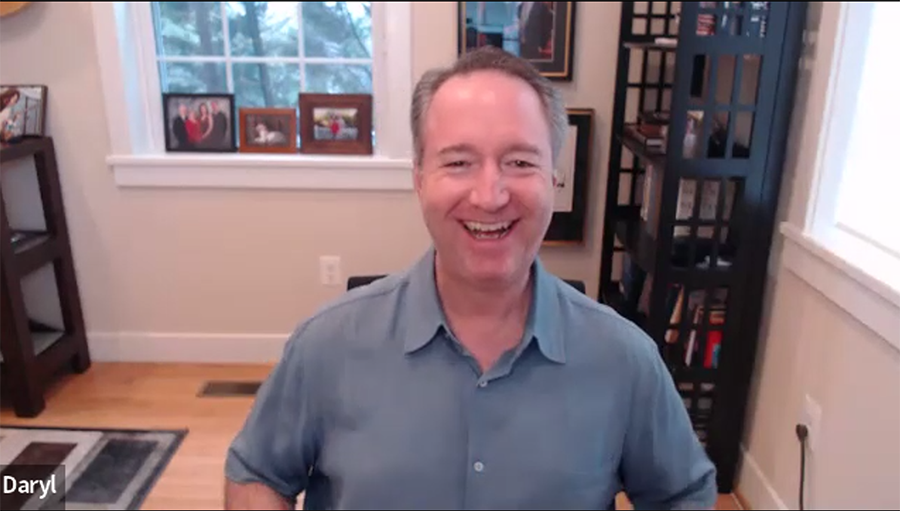
When Daryl Friedman was hired to become Global President and CEO of CEDIA, he was already aware of the fact that the organization was facing some heavy challenges and really needed someone ready to roll up their sleeves and get to work. It was a challenge he says he was both ready for and was uniquely qualified to address, based on his previous association experience. Then he went to work digging up more evidence of the challenges ahead.
In order to get a sense of Friedman’s thinking and process, I spoke with him via Zoom for nearly an hour. It was a wide-ranging discussion on many key issues for an association that I’ve had some issues with over the years. This article is Part 2 of that interview.
See Part 2 of my interview with the new CEDIA CEO
Before I go on with Part 2 of this interview with Daryl Friedman, let me strongly recommend that the reader first go back and read Part 1 from last week if you have not already seen it. It will help provide more context for this second half of that interview.
In Part 1, Friedman talked about how his first priority was to seek out “stress points” for the association and its members. In order to do that, he contacted several parties, including both members and vendors, to get their perspective on CEDIA. But did he feel people were being honest with him? Often, members who get that rare opportunity to meet with the CEO will moderate their criticisms, worried about “political” ramifications.
Encouraging Honest Input
Friedman assured me that he had encouraged them to speak plainly about their views on the association – and to not hold anything back.
You know, I’ve actually found that people opened up quite a bit and have been very honest with me. It usually takes me asking the question a few times, because people want to be very formal the first time. Then I’ll say, tell me more about that… And then, how do you really feel about that? By the third time asking, I’m usually getting honest feedback.
Daryl Friedman, CEDIA Global President & CEO on how he pushed people to give him honest feedback on the Association
Then I asked him if he made any effort to go beyond those who had reached out to him or those to whom he was recommended to speak. Sometimes the most important feedback comes from those who are NOT reaching out to speak with him.
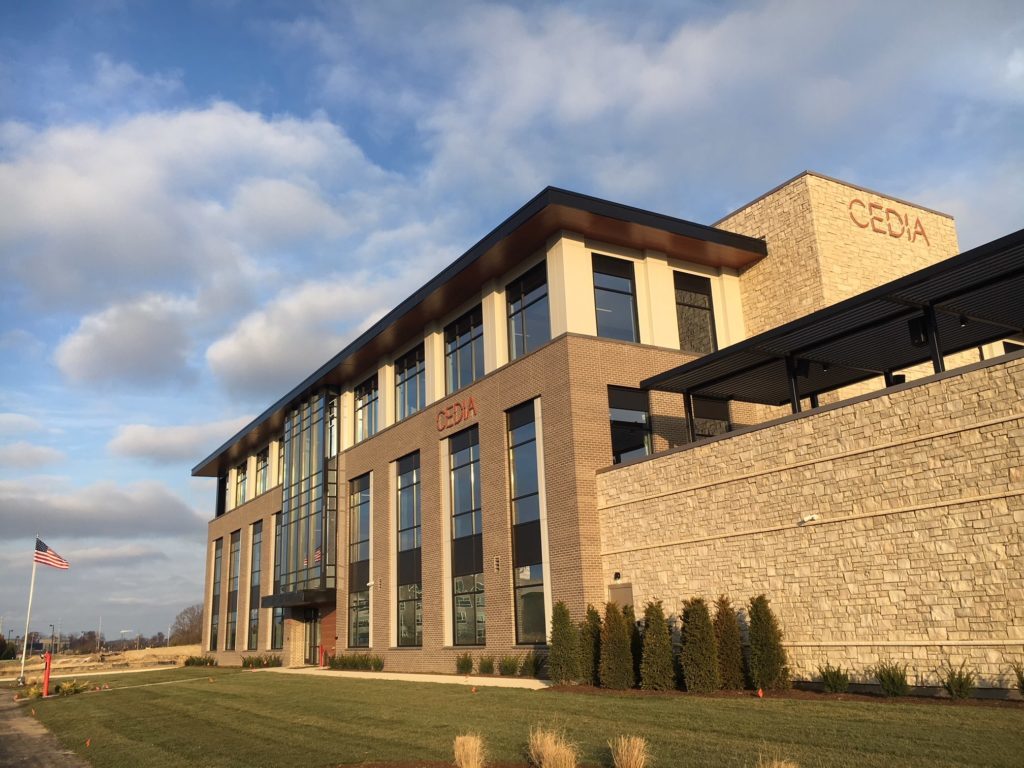
Reaching Out to a Disgruntled Early Member
And here is where Friedman really demonstrated to me that he is unafraid to take a different approach from past administrations. Yes, he said, he wanted to speak with some of the “original” members to get their more long-term viewpoint. So he asked an intermediary to connect him with one of their early members – one who is quite often critical of the organization.
It was clear that Friedman knew that this person had been critical of CEDIA. Yet, he sought that person out deliberately. Past administrations have at times actively avoided interacting with those critical of the association – whether a media outlet like Strata-gee whom one past Board Chairman banned any CEDIA executive or board member from speaking with – or disgruntled members.
A Willingness to Hear All Feedback, Positive or Negative
So this willingness by Friedman to take all input is encouraging. It is impossible to solve the challenges of the association without having a full and nuanced understanding of what those challenges are and how they are viewed.
What did this original member tell him? “He was not comfortable or happy with the CEDIA of today,” Friedman said. “And that was very upsetting to me.” He went on to add the following.
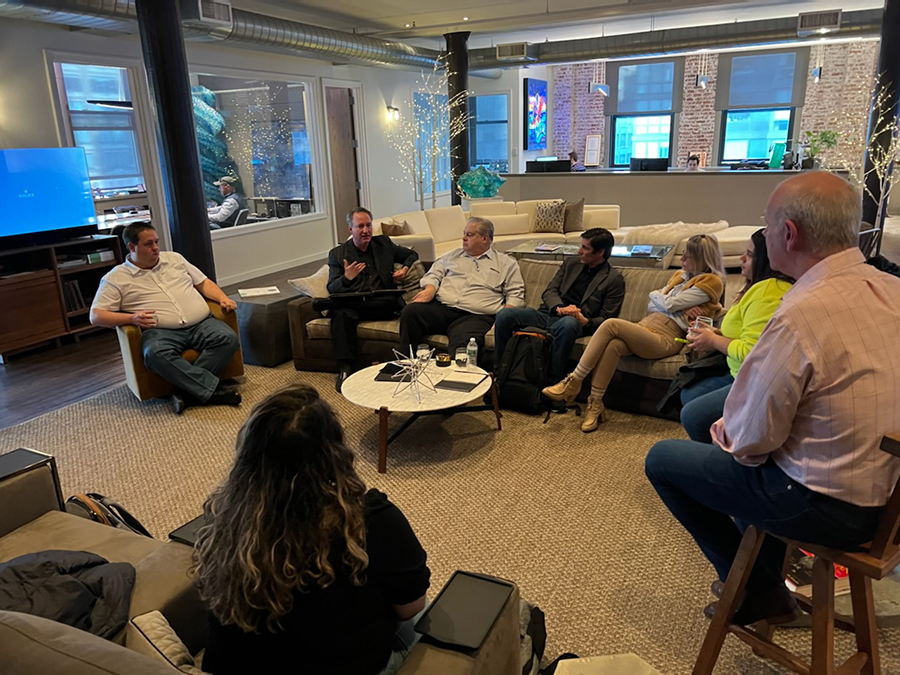
Generally it was a sort of feeling that we lost our way. And that the focus wasn’t on the integrator anymore. The focus was on a new building…or selling the [CEDIA Expo] show – which is certainly something that many people have said to me that they felt was the wrong move.
Daryl Friedman
A CEDIA ‘Reset’; Focus on ‘Serving the [CEDIA] Community’
“So those kinds of opinions are out there. I can’t speak to those. You know, I wasn’t here when those big decisions were made. But I want to express to people that whatever situation we’re in today, we’re going to go forward in a way that is going to be serving the community.”
And while he didn’t want to go much further in sharing a private conversation, he did tell me that they ended up in a deep conversation that lasted around two hours long. From that conversation, he learned much more detail about the history of the association.
“I also think he got a little more comfortable with my approach and how we’re going to kind of reset CEDIA in a way that’s going to make be more impactful to the community,” Friedman said.
Deeper Research on How to Make CEDIA a More Compelling Option for Integrators
Friedman also revealed to me that he is going even deeper into researching the integrator community to understand their relationship – or lack thereof – with the association. CEDIA is engaging a research company to survey integration companies that are not currently members of the association in an attempt to understand why they have chosen not to join.
We’re going to embark on a major research study about the community. You don’t know why someone is not joining your community by surveying your members. The next piece is going to be an in-depth research on people who are not members, who should be. I want to know why. I want to know what’s missing. There’ll be a qualitative phase, where there will be one on one interviews and small focus groups, where you really can kind of figure out what the issues are to hone in on. Then you validate that with a quantitative phase where you turn that feedback into questions on surveys to non-members, to manufacturers, and to architects to find out what’s missing from CEDIA. Why do we have a really a small percentage of the total industry as members? We’re gonna learn how to better serve those folks and they’re gonna want to be part of CEDIA.
Daryl Friedman
This research project is a smart approach that I’m not aware of any previous administration at CEDIA ever pursuing. Clearly, Friedman thinks differently and is all about finding ways to make CEDIA a more compelling option for integrators – and for the greater integration community as a whole.
Pondering the Relational and Transactional Benefits of Joining an Association
Interestingly, Friedman tells me that to some degree all associations deal with friction between what he calls the transactional benefits of an association and the relational benefits. “You join CEDIA, you get a discounted TCD (The CEDIA Designer software), you get a free badge at Expo, if you’re exhibiting – you get a price break. Those are great. Those are very transactional.”
But, Friedman says, relational benefits run deeper and longer-lasting. “If we tell a member our advocacy office is in your town fighting to keep you in business…fighting to make sure that you can still pull low-voltage wire. There’s no trade-off…there is no direct transaction.” That capability, that no integrator could afford to do on his own, is a tremendous relational benefit.
“I want to move us a little bit away from that transactional model to this deeper relational model where the membership sees us as elevating the entire industry, not just giving them a discount here and there,” Friedman emphasized.
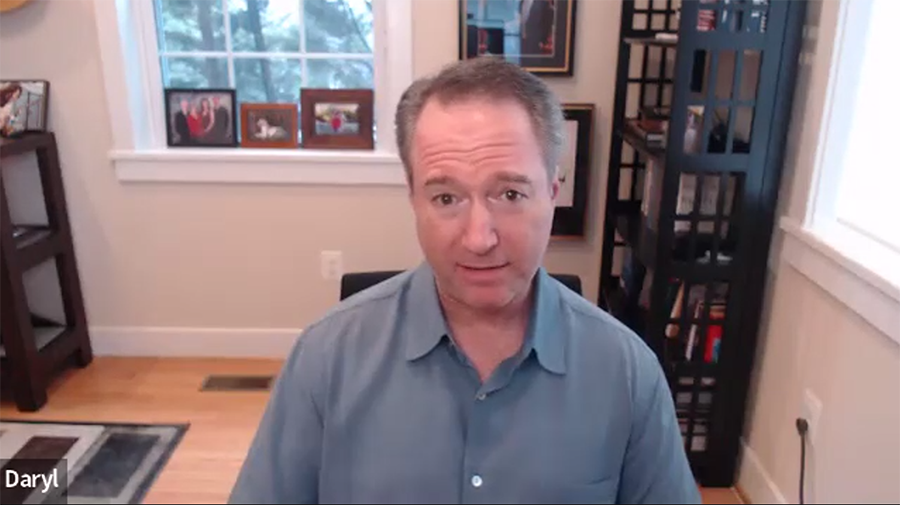
Transferring The CEDIA Designer Software Back to Its Creator
Last month, the association announced that it was transferring ownership of The CEDIA Designer (TCD) system design software back to Guy Singleton, its creator (as The Cinema Designer). They cited “a redoubled emphasis on essential association services to the industry” as the reason for the decision to jettison the software. Singleton agreed to continue TCD’s special discount pricing (as well as a free tier) for CEDIA members.
Friedman revealed to me that while they felt the software was “an incredible value,” they were just unable to grow its adoption, “…and we were frankly operating at a loss.” CEDIA’s CEO noted that he must act responsibly with the association’s financials and so he sought to work out a deal. With Singleton’s agreement to take TCD back while continuing to offer CEDIA members the same deal they’ve enjoyed, Friedman saw a true win-win situation. Now the team formerly dedicated to TCD can refocus its energy on other member/industry support areas and “we can take that monthly loss off our books.”
Fresh Thinking
I’d say that’s a good example of smart business management – focusing on your core mission, maintaining member benefits, redeploying internal resources to more productive areas, and improving the financials all at the same time. Again, in my view, this is fresh thinking from the association’s management.
So I think a successful organization is responsive to its members and fiscally responsible with their money.
Daryl Friedman
Defining a Successful Association Versus a Struggling Association
So with Friedman’s extensive association experience, I asked him to define what he thought the elements of a successful association were versus a struggling association. With nary a second of hesitation, he launched into his thinking.
Well, obviously, the needs of the members have to be paramount for any association to be successful. But you also have to turn those needs into a viable business model. So I would say there are really two halves to this – one is that we have to do the work, we have to do the job that helps our members…that raises our community to do the things that frankly, no one else can do but CEDIA. You know those broad industry benefits that raises everybody up. Anybody else who’s in this business, whether you’re a manufacturer or buying group or anybody else, you’re gonna be focused on the needs of your business. But we’re a nonprofit service organization. We’re focusing on lifting up the entire industry. But we also have to do that in a way that’s fiscally responsible.
So I think a successful organization is responsive to its members and fiscally responsible with their money.
Friedman’s Plan to Restructure Revenues
Friedman told me that he sees the need to diversify CEDIA’s revenue streams. He said: “We’ve been very reliant on ISE [Integrated Systems Europe, a European trade show that CEDIA co-owns with AVIXA] for revenue. And you see what happens when a pandemic hits and you lose a couple of years of ISE – and then, CEDIA becomes in a struggling financial situation.”
At the same time that all of this is true, CEDIA’s new CEO would also like to make member education free – or as close to free as possible. How? The man has a plan.
OPM – Tapping into Public and Private Grant Money
His plan is to use OPM (other people’s money). According to Friedman, there is a lot of government and private funding available for education. He plans to tap into that. The week before we spoke, he met with the Indiana State Economic Development Corporation who Friedman says was very impressed with their high-end training facility in their state.
In April, he is meeting with the Department of Workforce Development. Friedman assures me that there are all kinds of money available from public and private sources, such as workforce ready grants, retraining grants, workforce development grants, diversity grants, and more.
To the degree to which they are successful in locking up this funding, it would directly increase revenue into CEDIA, which could then offer low or no-cost education for its members.
Space Available to Rent
The second potential source of increased revenue he sees for CEDIA is its headquarters building. Like many companies and organizations, the association has come to recognize that they will probably move forward in this age of COVID with a hybrid workforce deployment. With that being the case, they can reduce their footprint in the building and open up more space for rent.
It’s an attractive building with attractive space, Friedman told me. Right now the second floor is rented out, but with only around two dozen employees working there, he believes they can cut back on the space CEDIA requires and open up for more for rental income. He met with a real estate company who said the Fishers office was one of the nicest looking spaces in Indianapolis and they feel they can get easily raise their income.
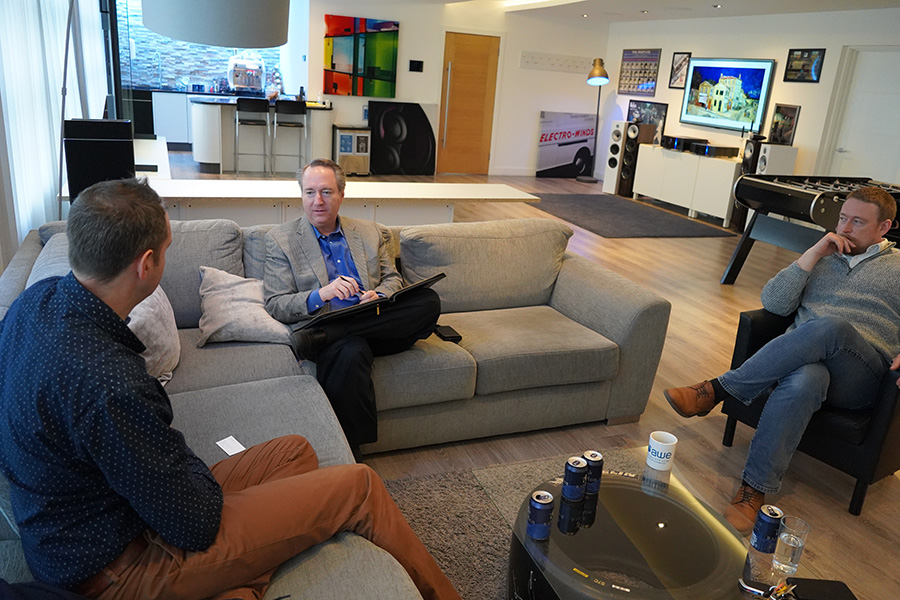
A New Openness
CEDIA’s new CEO is smart, friendly, confident and you could clearly sense his experience at running trade associations. He did not duck any of my questions and freely offered information when I asked for it. For example, I asked for the count of members over the last four years – and he immediately agreed to provide them. I had them within 48-hours. While that may not sound like a big deal, I’ve requested this information before and had previous administrations dog me on it.
| 2021 | 2020 | 2019 | 2018 |
| 3,655 | 3,394 | 3,953 | 3,909 |
Daryl Friedman offered a lot of smart ideas and said all of the right things. He showed some innovative and independent thinking – and I found much of it compelling and even refreshing. Of course, the proof is in the pudding and we will have to see how this all transpires over time. Will he follow through on all of his ideas? We just have to watch what happens.
One Last Question
But at the very end of our conversation, I threw one last question at him – a question that would give me a sign of just how committed he and the Board is to fiscal responsibility. My question? How many executive retreats are planned for this year? Executive retreats are where the board members and sometimes top members of the staff fly off to some glitzy global location, staying in expensive hotels, eating in expensive restaurants…all on CEDIA’s dime. Ostensibly, they are there to work as well, but it is a poor use of the association’s money in my view.
Friedman’s answer: zero.
Bingo…
Learn more about CEDIA by visiting: cedia.net.


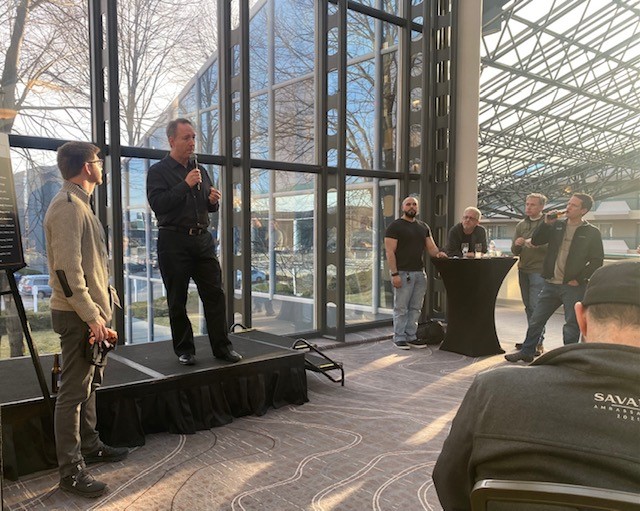



“We’ve been very reliant on ISE [Integrated Systems Europe, a European trade show that CEDIA co-owns with AVIXA] for revenue. And you see what happens when a pandemic hits and you lose a couple of years of ISE – and then, CEDIA becomes in a struggling financial situation.”
— Jolly good point and great to have this publicly acknowledged.
Last month, the association announced that it was transferring ownership of The CEDIA Designer (TCD) system design software back to Guy Singleton, its creator (as The Cinema Designer).
— This will be a very popular move. Privately for many manufacturers and installers, very popular indeed.
His plan is to use OPM (other people’s money). According to Friedman, there is a lot of government and private funding available for education. He plans to tap into that. The week before we spoke, he met with the Indiana State Economic Development Corporation who Friedman says was very impressed with their high-end training facility in their state.
— An excellent starting point. Over time consideration should be given to increasing the advocacy organization. Global and EMEA don’t really exist other than cost center constructs.
— Do you really need ‘Global Development’ people flying from London to Australia on EMEA cost centers? In the longer term, an ambitious advocacy organization with a presence on K Street would be preferable to an undisciplined presence on planes.
CEDIA’s new CEO is smart, friendly, confident and you could clearly sense his experience at running trade associations. He did not duck any of my questions and freely offered information when I asked for it. For example, I asked for the count of members over the last four years – and he immediately agreed to provide them. I had them within 48-hours. While that may not sound like a big deal, I’ve requested this information before and had previous administrations dog me on it.
— Bravo! Not to be underestimated as a cultural change in the first 100 days.